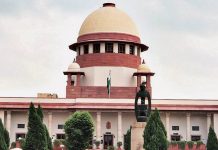This article is written by Anisha Bhandari pursuing B.A LL.B (Hons.) from Institute of Law, Nirma University. The article discusses the past, present and future of legal education and how it has evolved.
Table of Contents
Introduction
Polity, legal education, and growth have been interlinked topics in contemporary emerging societies. According to Babylon’s Dictionary, ‘Legal education is the schooling of persons who wish to become legal practitioners or those who merely plan to use their law degree to some extent, whether it be relevant to the law (such as politics or academia) or industry. It includes first degrees in law, which may be pursued at either undergraduate or graduate level, depending on the country; vocational courses that prospective lawyers are expected to undergo in certain countries before they can pursue practice and higher education degrees. After undergraduate studies in law departments of colleges, classes were taught as three-year programs culminating in the award of the LL.B degree. With the establishment of National Law Schools, this mediocrity has been challenged and has been successful in attracting students to the study of law.
History of legal education in India
Ancient Era
The fundamental principle of schooling in ancient India was to have the correct path in the various realms of life. The definition of legal schooling in India goes back to the Vedic period when it was known as a branch of Dharma. Nevertheless, there is no evidence of any formal legal schooling at the point. Education was self-acquired in Dharma specific matters. The Vedas were the initial origins of legislation, and the Smritis stated that the Vedas and Smritikars were excellent jurists. Smritikars, writers, and Nibandhakars [essayers] became legitimate defenders of the constitution. Sadachara, Tradition, Nyaya, or Yukti became the foundation of the legal procedure in ancient India. Consequently, in the absence of the need for qualified legal practitioners, there was no institutionalization of legal education as a separate unit, yet the same may be assumed to have been imparted as part of the general education that revolved around the notion of Dharma.
Portuguese Period
The legal structure in Goa with the arrival of Portugal, i.e. from 1510 to 1964, is of significance as the Portuguese were the first to develop and the last imperial force to quit the Indian coast. The Portuguese rule in Goa varies from the British rule because the former entered Goa as a proxy of the Sovereign Monarch, while the latter entered parts of India as a trading company. The administration of justice was, therefore, the responsibility of the King of Portugal from 1510 onwards. The Decree of 1832 proposed a new plan for the judiciary in Portugal and required special legislation for the State of India. This culminated in uniformity in the judicial administration and the much-needed judicial hierarchy. A High Court was established in Goa by the decree of 1836. It divided Goa into three comarcas, and each comarca had a judge of the Comarca. The Decree also established the Crown and Revenue Prosecutor to take care of the King’s interest in the Courts. The Police Correctional Court and the War Councils were formed in every area. In addition to the development of a modern judicial structure, the Decree abolished all the judicial offices, which were in place in Goa until 1836. Subsequent decrees of 1856, 1866, 1894 and 1927 improved the changes introduced by the decree of 1836 and channelled the uniform judicial system in Goa. In fact, there was no structured legal education needed to enter the legal profession in the case of a law graduate. As far as Bachelor’s degrees are concerned, legal education was offered at the University of Lisbon, Portugal. It is thus fair to say that before Goa was liberated from Portuguese control, legal education was neither developed nor institutionalized in Goa. Even after Goa became part of India, legal education was offered in Goa only after 1973, when the first Law College was established in Panaji.
British Period
The British came to this nation for trading purposes, which they began with a corporation popularly known as the East India Company, established in England in 1600. In the beginning, the courts were presided over by merchants who had a very rudimentary knowledge of the law, but later legally trained persons were put to work. In 1672, Governor Gerald Angier established the first British court in Bombay. The first Attorney General named by the Governor was George Wilcox, who was acquainted with the legal industry and, in particular, with the management of the property of the dead and the awarding of probates.
The first practical move in the direction of organizing the legal profession was taken by the Regulating Act of 1773, which allowed the Supreme Court to recruit lawyers and advocates. The Supreme Court was founded in Fort William, Bengal, by charter given in 1774. At the moment, Indian attorneys had no ability to testify before the Courts. The position was the same when the Supreme Courts with the same jurisdiction and power were established later in Bombay and Madras. The pattern of legal education that is in vogue in India has been replicated by the English; following the establishment of their rule in India. Formal legal education began in India in 1855, when the first professorship of law was established at the Ephistone Government College in Bombay and Madras and the Hindu College in Calcutta. At the period, the primary goal of legal education was to prepare law students to support the lower courts and the High Courts in the administration of justice by enrolling themselves as Vakils or being judicial officers and thereby representing the needs of the government.
Aim of legal education in India
The primary objective of legal education is to produce professional lawyers. The word ‘professional lawyer’ refers not only to ‘litigation, prosecutor, viz.,’ a lawyer who pleads in the ordinary courts but also to all individuals educated in law whose jobs depend primarily on their degree in law. It aims at the furnishing of skills and competence, the basic philosophies and ideologies for the creation and maintenance of a just society. It should be the responsibility of society to recognize its issues and to maintain social and economic fairness through the Rule of Law and to remove inequality, oppression, racism, and nepotism from society. Legal education provides for the improvement of moral intelligence and offers a feeling of defending human rights and dignity before the law. The curriculum of legal education needs to be considered in terms of its objectives.
Challenges to legal education in India
Previously, the main aim of law schools and law colleges in India was not to teach law as a branch of science and as a branch of study, but merely to provide students awareness of black letter law; certain rules and requirements of the law that would enable them to practice law exclusively for local needs. Gradually this perception changed and the legislative and legal education reform process began. When the globe becomes a ‘big community,’ the idea of ‘local practice’ was applied to ‘transnational activity.’
Roscoe Pound found out that the statute had transcended territorial and political borders and had become an economic imperative. Today, a groundbreaking system of comprehensive interdisciplinary legal education is relevant in different fields such as comparative law, information technology, intellectual property, corporate governance, human rights, the climate and foreign trade law, innovation and exchange, technology transfer, alternative dispute resolution, and space is important. Comparative legal education for professional excellence in these and other areas is needed on a global basis.
Present scenario
The rise of youth as a distinct political class is particularly noticeable in the newly formed nations. The same is true of India, where organized student movements have played a key role in our struggle for independence. Organizations such as the All-India Student Federation (AISF) and the National Student Union of India (NSUI) have emerged to mobilize and integrate young people into the national resistance against British rule.
After independence, India witnessed the rise of various other student bodies with different political philosophies and affiliations, which played a key role not only in influencing the national political climate but also in attracting the government’s attention to particular student concerns such as admission policies, education, academic freedom and student welfare in general. However, in contrast to the desired metamorphosis of student unions from an entity that plays an active role in national politics to an administrative body whose primary aim is to take care of the general interests of the student body, they remain all but apolitical.
While student policy is not in itself undesirable, the politicization of student unions in India has produced many undesirable consequences. Apart from the above-mentioned trend, higher educational institutions in India have been afflicted by the ills that define the country’s politics. Frequent student union clashes, class boycotts, protests, roadblocks, intimidation of students, a show of military strength, disturbance of academics, and abuse have been widespread around the nation during college elections. Although the position of student unions in the fight for freedom must be granted due recognition, it must be understood that almost 70 years after independence, what higher education institutions require is a student union whose primary function is to ensure the wellbeing of students and not political pawns whose sole purpose is to enforce their respective political philosophies and extend their vote base. However, our political atmosphere has not allowed the same, and major parties such as Congress, Bhartiya Janta Party (BJP) and Communist Party of India(Marxist) (CPI(M)) continue to use student unions to build their strongholds over campuses across the country. As argued, while student association with politics is not the issue, it is, in fact, highly desirable for democracy like ours to call for educated and knowledgeable youth to participate and reform effectively, what is unfortunate is the politicization of student unions.
Two things need to be remembered here. The first is empirical findings revealed that college politics wound up causing more damage. Students are not only exposed to abuse and intimidation in schools where campus governance is widespread, but the standard of education often continues to decline as a consequence of repeated protests by these organizations, who frequently turn to crowd actions to make their demands known. The country’s best educational institutions, such as the IITs and the IIMs, have gone ahead and prohibited the politicization of student unions, with some states like Maharashtra and Kerala completely banning student union elections.
Second, the statement put forward by campus decision-makers that democratic practice allows political parties to be involved on campuses, and the same is important for mobilizing students for national causes, and influencing potential leadership is deceptive. The politicization of student unions has the unavoidable effect of forcing a predetermined agenda on the extremely amazing minds of an associated political party exerting excessive control over its leaders. This prohibits individual students from forming an autonomous and detailed perspective since they are obligated to remain obedient to the roles of their respective parties. While this may not be a theoretically sound argument, it is more or less in keeping with current trends. In the context of the above, it can be claimed that academic independence plays a significant role in defining potential leaders as a community, and political association is not a precedent in either cultivating political knowledge among students or inculcating leadership skills. In addition, students always have the freedom to pursue their political beliefs outside of campus.
Conclusion
The claim that de-politicization of labour unions is an unfeasible strategy is not appropriate, because it is the government’s responsibility to ensure that higher education in the country will not fail as a consequence of the political intervention. Today, the agenda of most of the associated student organizations is no longer centred on student concerns, but rather they are being pure mouthpieces to political parties and gradually entangled in national political controversies, and so taking a toll on education expectations standards around the nation. The argument that affiliated student unions ensure that student interests are noticed by political parties, which, in turn, allow them to efficiently reach out to students, is false, as prevalent activities demonstrate otherwise. In addition, the student initiatives as witnessed after the Delhi Rape incident and the peaceful anti-Lanka protests in Tamil Nadu are two glaring examples of how apolitical student movements prove to be more effective compared to the violence committed by political unions, where the aim shifts to collateral damage rather than to the actual objectives to be achieved.
References
- https://www.thehindu.com/news/cities/Thiruvananthapuram/student-politics-government-law-college-in-turmoil/article29272860.ece
- https://medium.com/@youngindiafdn/resistance-and-representation-the-impact-of-student-unions-on-politics-5bd3ba9190d5
- https://www.jstor.org/stable/4382346
- https://www.deccanchronicle.com/lifestyle/viral-and-trending/030718/student-politics-beyond-ban.html
LawSikho has created a telegram group for exchanging legal knowledge, referrals and various opportunities. You can click on this link and join:
 Serato DJ Crack 2025Serato DJ PRO Crack
Serato DJ Crack 2025Serato DJ PRO Crack











 Allow notifications
Allow notifications



